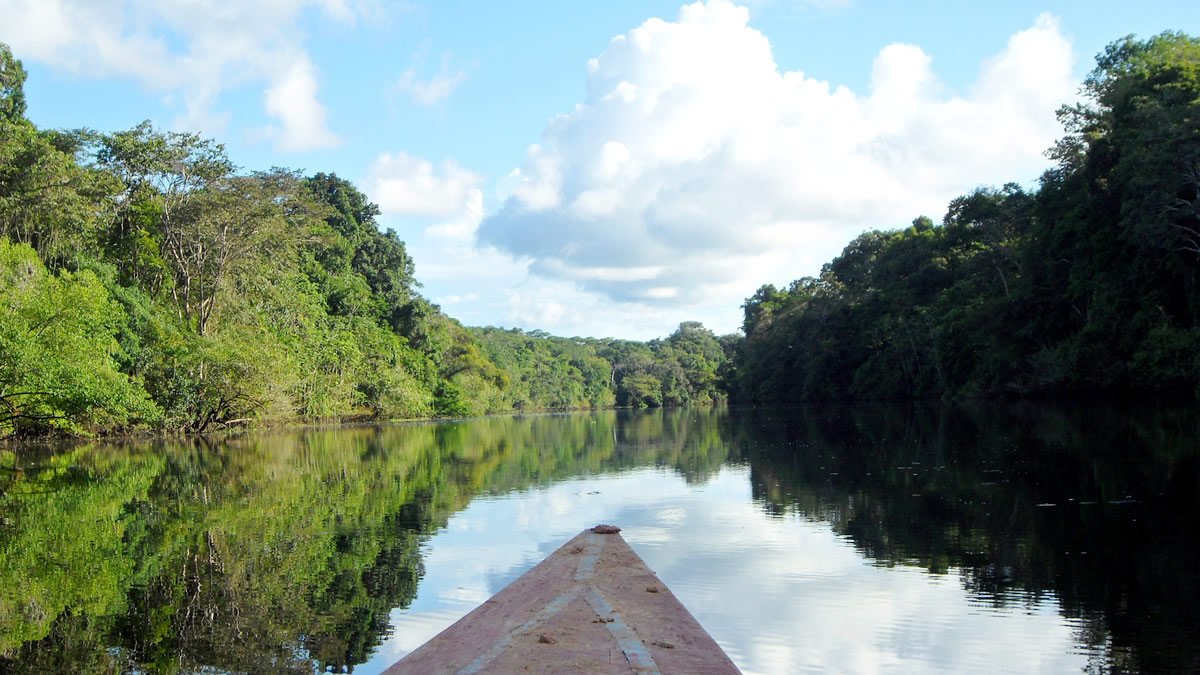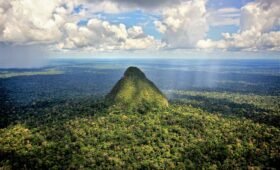The Amazon Rainforest, often referred to as Amazonia, is one of the most biodiverse and ecologically significant regions on our planet. Spanning over 5.5 million square kilometers, it covers parts of nine countries in South America: Brazil, Peru, Colombia, Venezuela, Ecuador, Bolivia, Guyana, Suriname, and French Guiana. Recently, Amazonia has gained renewed attention as a marvel of nature, not only for its vast expanse and unparalleled biodiversity but also for its crucial role in global climate regulation and environmental sustainability.

Biodiversity: A Living Library
Amazonia is home to an estimated 390 billion individual trees, representing around 16,000 species. This vast forest hosts 10% of the known species on Earth, including iconic wildlife such as jaguars, harpy eagles, and pink river dolphins. The rainforest’s understory, canopy, and emergent layers create a complex habitat supporting myriad plant and animal species, many of which are yet to be discovered or studied.
This extraordinary biodiversity is vital for ecological research and pharmaceutical developments. The Amazon’s flora and fauna hold the keys to understanding ecosystem dynamics, evolutionary processes, and potential medical breakthroughs. Protecting this biodiversity is paramount for the continued health and sustainability of our planet.
Ecological Importance
The Amazon Rainforest plays a critical role in the Earth’s climate system. It acts as a giant carbon sink, absorbing large amounts of carbon dioxide and helping to mitigate the effects of climate change. The rainforest’s dense vegetation releases oxygen and stores carbon, making it essential in regulating atmospheric gases and maintaining global climate stability.
Moreover, Amazonia influences regional weather patterns and the water cycle. The vast forest generates significant amounts of rainfall through a process known as transpiration, where trees release water vapor into the atmosphere. This moisture contributes to the formation of clouds and precipitation, affecting weather patterns across South America and beyond.
Cultural Significance
The Amazon Rainforest is not just a natural marvel; it is also a cultural treasure trove. Indigenous communities have lived in harmony with the forest for millennia, preserving traditional knowledge and sustainable practices. These communities depend on the forest for their livelihoods, food, medicine, and cultural identity. Their wisdom and stewardship are invaluable in the efforts to conserve Amazonia.
Preserving the cultural heritage of Amazonian indigenous peoples is as crucial as protecting the rainforest itself. Their intimate understanding of the ecosystem and sustainable living practices offer insights into how humanity can coexist with nature.
Conservation Challenges
Despite its importance, Amazonia faces significant threats from deforestation, illegal logging, mining, and agricultural expansion. These activities not only degrade the environment but also displace indigenous communities and disrupt the delicate ecological balance. Climate change further exacerbates these challenges, with rising temperatures and changing precipitation patterns threatening the rainforest’s health and resilience.
Efforts to conserve Amazonia require a multifaceted approach involving governments, NGOs, indigenous communities, and the international community. Policies promoting sustainable development, stricter enforcement of environmental regulations, and support for indigenous land rights are essential in preserving this natural wonder.
The Amazon Rainforest, a new marvel of nature, embodies the extraordinary beauty and complexity of our planet’s ecosystems. Its unparalleled biodiversity, ecological significance, and cultural richness make it a treasure worth protecting. As we continue to uncover the secrets of Amazonia, it is imperative to balance development with conservation to ensure that this natural wonder thrives for future generations. By recognizing and valuing the Amazon’s immense contributions to our planet, we can take meaningful steps towards safeguarding this irreplaceable marvel of nature.



